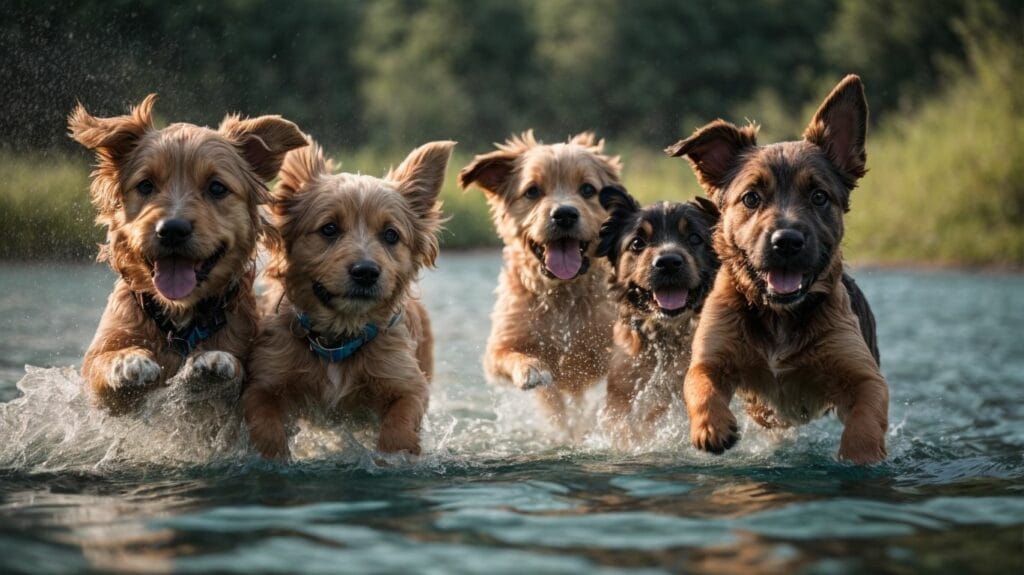Not all dogs are natural swimmers, and their ability to swim can vary based on various factors. This article aims to provide insights into the swimming capabilities of dogs and the factors that contribute to their swimming abilities.
1. Can All Dogs Swim?
Contrary to popular belief, not all dogs are born with an innate ability to swim. While some dogs may instinctually take to the water, others may struggle or may even have a fear of swimming. The ability to swim depends on various factors, including anatomy, previous experience, and body composition.
2. Why Do Some Dogs Swim Better Than Others?
Several factors contribute to why some dogs swim better than others. These factors include anatomy and breed, previous experience and training, and body composition and buoyancy. Certain breeds are naturally better suited for swimming due to their physical characteristics, while others may require more training and experience to become proficient swimmers.
a. Anatomy and Breed: Some breeds have physical attributes, such as webbed feet, a sturdy build, and an instinct for swimming, that make them excellent swimmers. Breeds with a thick coat and a strong swimming instinct, such as Retrievers and Water Spaniels, are often great swimmers.
b. Previous Experience and Training: Dogs that have had positive experiences and training in the water from an early age are more likely to swim confidently. Proper training and introduction to water can help dogs overcome any fear or hesitation they may have.
c. Body Composition and Buoyancy: Factors such as body fat percentage and muscle mass can affect a dog’s buoyancy in the water. Dogs with a higher percentage of body fat tend to float better, making swimming easier for them naturally.
3. What Breeds of Dogs are Generally Good Swimmers?
Certain dog breeds are known for their swimming abilities, thanks to their physical characteristics and instincts. Some good swimmers include Retrievers, Newfoundlands, Portuguese Water Dogs, Labrador Retrievers, and Irish Setters.
4. What Breeds of Dogs are Generally Poor Swimmers?
On the other hand, some dog breeds are generally not well-suited for swimming due to their physical attributes, such as short legs or short muzzles. These breeds may include Bulldogs, Pugs, Corgis, and Dachshunds. However, it’s important to note that individual dogs within these breeds may still enjoy and be capable of swimming with proper supervision and guidance.
5. How do you teach a dog to swim?
If you want to introduce your dog to swimming, it’s important to proceed slowly and with caution to ensure their safety and build their confidence. Here are some steps to teach a dog to swim:
a. Start in Shallow Water: Begin by introducing your dog to shallow water where they can touch the ground comfortably. This allows them to get used to the sensation of being in the water without feeling overwhelmed.
b. Use Positive Reinforcement: Encourage and reward your dog with treats, praise, and toys to associate swimming with positive experiences. This helps them build confidence and form a positive association with the water.
c. Gradually Increase Depth and Distance: Once your dog is comfortable in shallow water, gradually increase the water depth and distance they need to swim. Support them as needed and provide reassurance along the way.
6. Water Safety Tips for Dogs:
When it comes to water activities with dogs, safety should always be a top priority. Here are some water safety tips for dogs:
a. Use a Life Jacket: Ensure your dog wears a properly fitted canine life jacket when swimming, especially in open water or rough conditions. This provides additional buoyancy and ensures their safety.
b. Supervise Near Open Water: Always supervise your dog when near open water, such as lakes, rivers, or the ocean. Dogs can easily become tired or disoriented in unfamiliar water, so it’s important to keep a close eye on them.
c. Be Aware of Hidden Dangers: Be mindful of potential hazards in the water, such as strong currents, deep drop-offs, or underwater obstacles. These can pose risks to your dog.
By understanding the swimming capabilities of dogs and taking the necessary precautions, you can ensure a safe and enjoyable water experience for you and your canine companion.
Key takeaway:
- Not all dogs are natural swimmers: While some dog breeds are predisposed to swimming due to their anatomy, previous experience, and body composition, not all dogs instinctively know how to swim.
- Swimming can be taught: With proper training and introduction, most dogs can learn to swim. Starting in shallow water, using positive reinforcement, and gradually increasing depth and distance can help dogs become confident swimmers.
- Water safety is crucial: When it comes to dogs and water, safety should always be a top priority. Using life jackets, supervising near open water, and being aware of hidden dangers are essential steps to ensure a safe and enjoyable swimming experience for dogs.
Can All Dogs Swim?

Photo Credits: Petnarnia.Com by Christopher Walker
Can All Dogs Swim?
While it’s a common assumption that all dogs can swim, the reality is that not all dogs are natural swimmers. Breeds like Labradors and Retrievers are known for their swimming abilities, but others may struggle due to their body structure or temperament. It’s important to remember that individual dogs may have different preferences and abilities in water. Always supervise your dog around bodies of water, and consider using a life jacket for added safety, especially if your dog is unsure or inexperienced in swimming. It’s crucial to assess your dog’s comfort and skill level before assuming they can swim.
Why Do Some Dogs Swim Better Than Others?
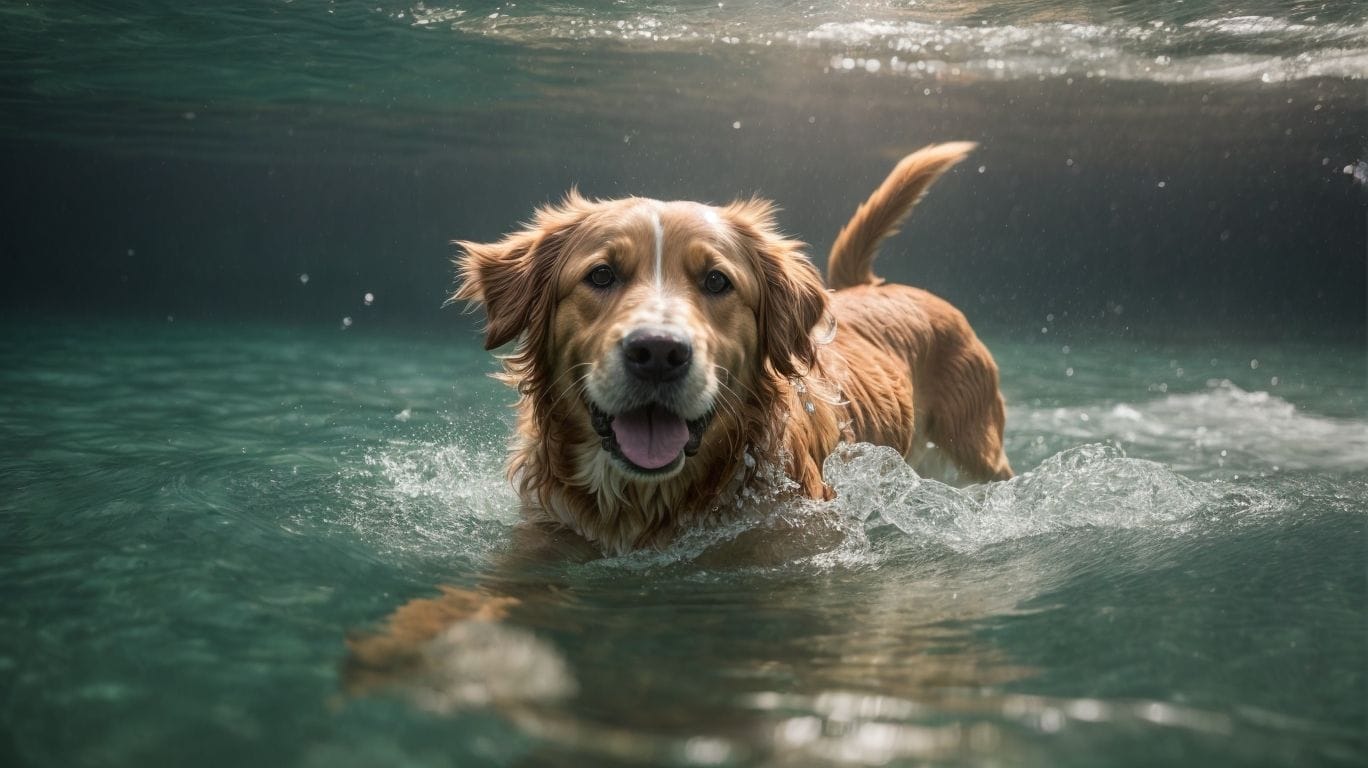
Photo Credits: Petnarnia.Com by Douglas Garcia
We have ever wondered why certain pups glide effortlessly through the water while others struggle to stay afloat. In this fascinating section, we’ll uncover the secrets behind why some dogs excel in swimming while others find it challenging. From the influence of their unique anatomy and breed characteristics to the impact of previous experience and training, we’ll dive into the factors that determine a dog’s swimming abilities. We’ll explore the role of body composition and buoyancy in shaping a dog’s aquatic prowess. Get ready to unravel the mysteries of canine swimming!
Anatomy and Breed
Certain breeds of dogs excel in swimming due to their unique anatomy and breed characteristics. Dogs like Labrador Retrievers and Newfoundlands, with their webbed feet, are naturally superior swimmers as the webbing assists them in paddling more efficiently. On the other hand, breeds such as Bulldogs or Pugs, with their short legs or flat faces, may not possess the innate ability to swim. Understanding your dog’s anatomy and breed can aid in determining their swimming capabilities, allowing you to take appropriate precautions for their safety in water. It is fascinating to note that the Newfoundland breed, renowned for its remarkable swimming skills, has webbed feet and a water-resistant coat, enabling them to thrive in aquatic environments.
Previous Experience and Training
When it comes to a dog’s swimming abilities, previous experience and training play a crucial role. Dogs that have had positive experiences in the water and have received proper training are generally better swimmers compared to those without. Previous exposure to water activities, such as playing in shallow pools or lakes, can build a dog’s confidence and familiarity with the water. Training using positive reinforcement techniques helps dogs develop the necessary skills and instincts for swimming. By gradually increasing the depth and distance, dogs can become more comfortable and skilled swimmers. Ultimately, previous experience and training are key factors in determining a dog’s swimming ability.
Body Composition and Buoyancy
Body composition and buoyancy play a vital role in the swimming abilities of a dog. Certain breeds possess a naturally higher fat content, which enhances their buoyancy and makes them exceptional swimmers. Breeds such as Labrador Retrievers and Portuguese Water Dogs have a dense and muscular body composition that aids in buoyancy. Conversely, breeds with shorter legs and heavier body structures, like Bulldogs and Pugs, may face difficulties in the water due to lower buoyancy. It is essential to understand a dog’s body composition and buoyancy to assess their swimming capabilities and ensure their safety during water activities.
What Breeds of Dogs are Generally Good Swimmers?
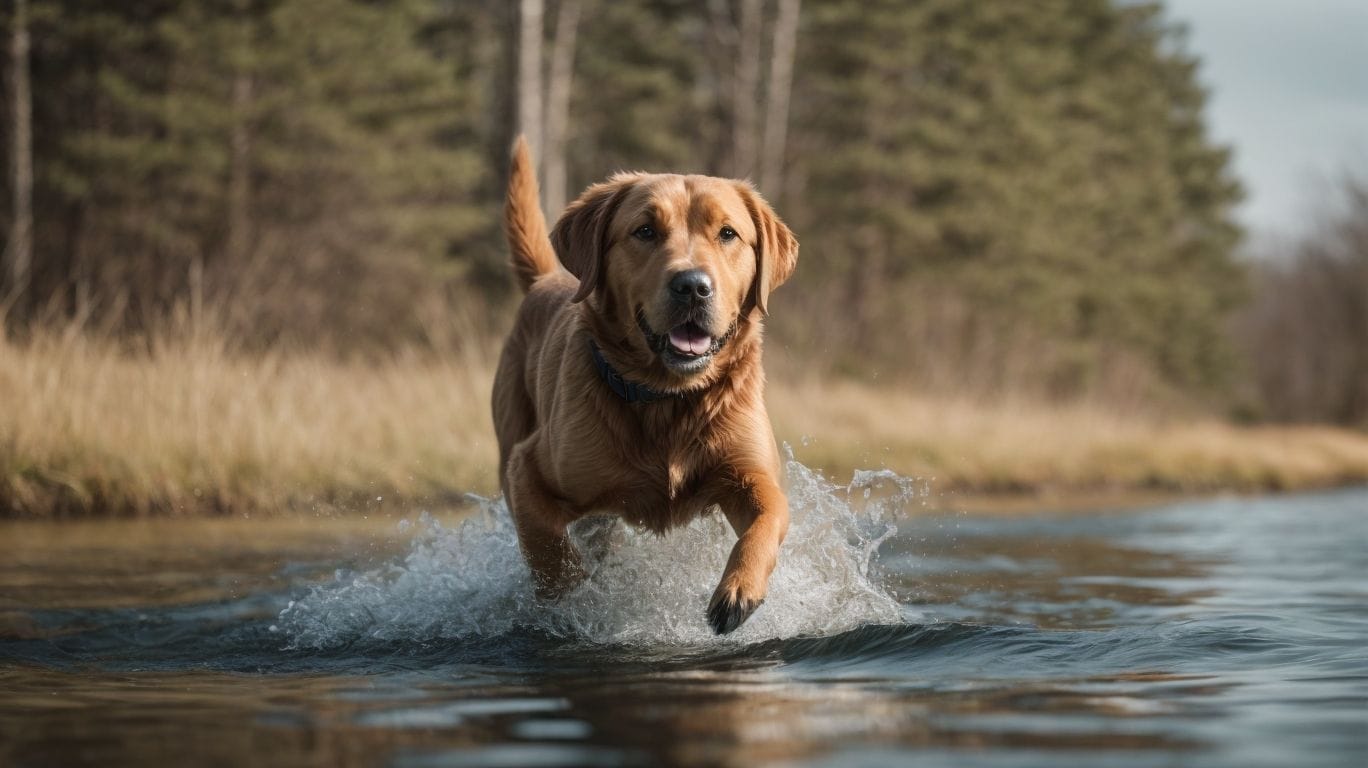
Photo Credits: Petnarnia.Com by John White
When considering What breeds of dogs are generally good swimmers, there are several factors to keep in mind. While all dogs can swim to some extent, certain breeds have natural swimming abilities due to their physical characteristics. Some breeds that are commonly known for being good swimmers include Labrador Retrievers, Golden Retrievers, Portuguese Water Dogs, and Newfoundlands. These breeds have webbed feet, a water-resistant coat, and a strong instinct for swimming. It’s important to remember that individual dogs within a breed may have different swimming abilities and preferences.
How to Teach a Dog to Swim?
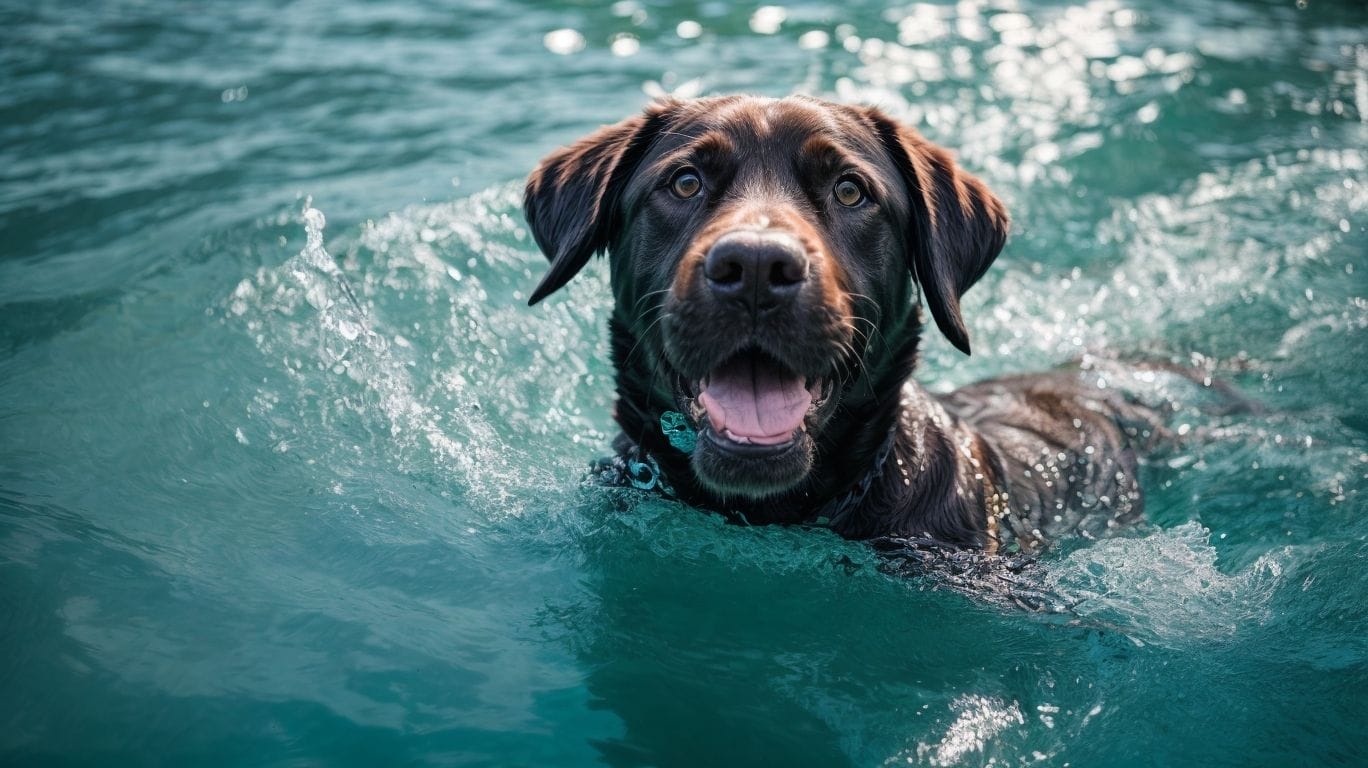
Photo Credits: Petnarnia.Com by Billy Baker
If you’ve ever wondered how to teach a dog to swim, you’re in the right place! We’ll dive into some practical tips and techniques for introducing your furry friend to the water. From starting in shallow water to using positive reinforcement and gradually increasing depth and distance, we’ll show you how to make the process enjoyable and safe for your four-legged companion. So grab your swimsuits (or should I say, doggy life jackets), and let’s make a splash!
Start in Shallow Water
Starting a dog’s swimming journey by choosing a calm and shallow area like a kiddie pool or a calm lake is crucial for their safety and comfort. Here are some steps to follow when introducing a dog to swimming:
Start in shallow water and allow your dog to explore the water at their own pace.
Enter the water with your dog and support them with a floatation device if needed.
Encourage and reward your dog with treats or praise for starting in shallow water and entering the water.
Gradually increase the depth and distance as your dog becomes more comfortable and confident.
Starting in shallow water helps dogs build their confidence and develop their swimming skills gradually.
Use Positive Reinforcement
Using positive reinforcement is a highly effective method for teaching dogs how to swim. This technique creates a positive association between swimming and rewards, which helps to encourage dogs to feel comfortable and confident in the water. Here are several ways to incorporate the use of positive reinforcement when teaching your dog to swim:
- Start in shallow water: Begin by introducing your dog to water in a safe and shallow environment, gradually allowing them to become comfortable.
- Utilize treats and praise: Employ positive reinforcement by rewarding your dog with treats and praise when they display a willingness to approach or enter the water.
- Gradually increase depth and distance: Employ positive reinforcement techniques to gradually increase the depth and distance your dog swims, ensuring they always feel comfortable and supported.
Remember to remain patient and provide plenty of encouragement and rewards. The use of positive reinforcement will help make the process enjoyable for both you and your furry friend.
Pro-tip: To ensure your dog’s safety, consider using a life jacket, especially if they are new to swimming or swimming in deep water.
Gradually Increase Depth and Distance
Gradually increasing the depth and distance is crucial when teaching a dog to swim. Here’s a step-by-step guide to follow:
- Start in shallow water where your dog feels comfortable.
- Encourage and reward your dog with treats and praise as they gradually increase their swimming distance.
- Gradually increase the depth of the water, ensuring your dog remains confident and enjoys the experience.
- As your dog becomes more adept, steadily increase the distance they swim while providing necessary breaks and rest periods.
Always keep in mind that patience plays a vital role throughout the process. Make sure to create a positive and supportive environment for your dog to learn and relish swimming.
Water Safety Tips for Dogs
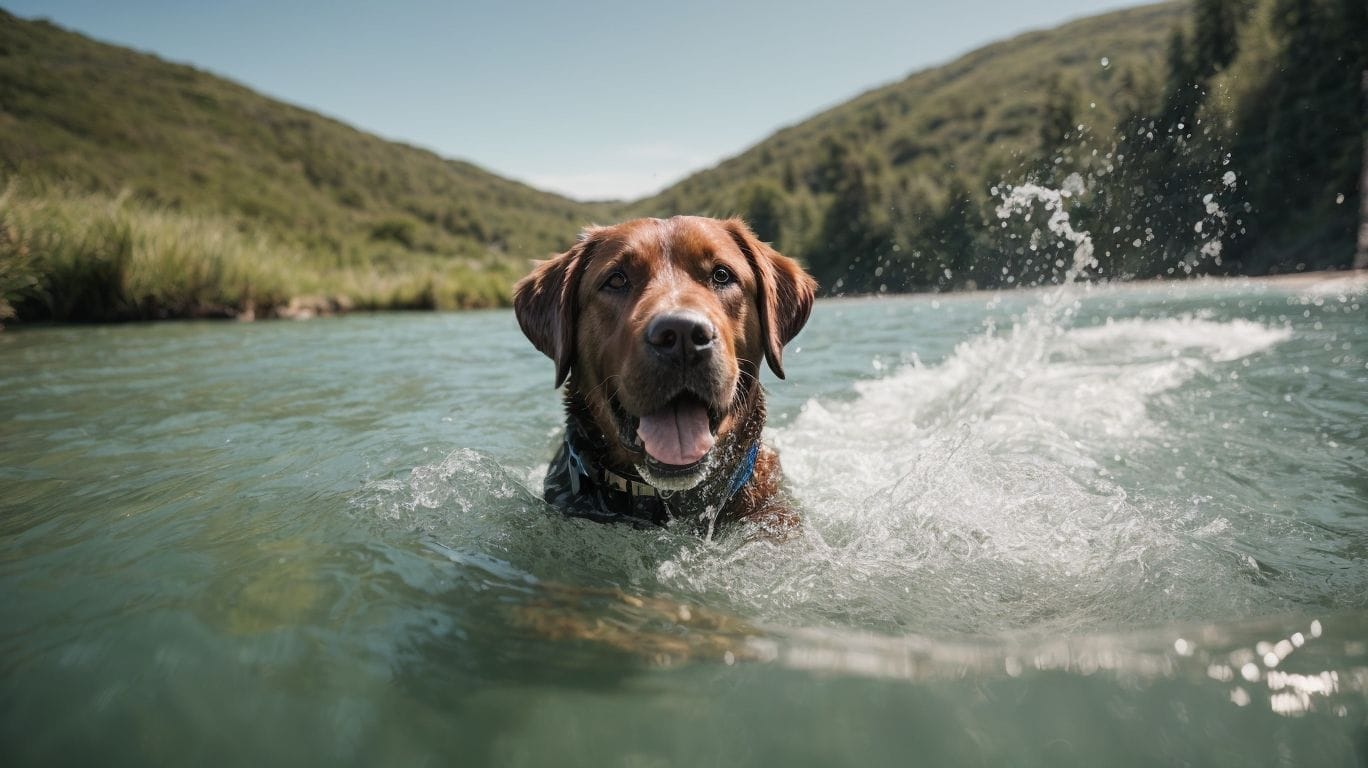
Photo Credits: Petnarnia.Com by Edward Sanchez
When it comes to water safety for our furry friends, we want to make sure they have a splashing good time while staying safe. In this section, we’ll dive into some important tips to keep in mind to ensure our dogs stay safe around water. From the importance of using a life jacket to supervising them near open water and being aware of hidden dangers, we’ve got you covered with the essential knowledge to keep those tails wagging and paws paddling. So, let’s jump right in and make a dog’s day at the water unforgettable – for all the right reasons!
Use a Life Jacket
Using a life jacket is vital for ensuring the safety of your dog while swimming. Here are some guidelines to follow when using a life jacket:
- Use a life jacket that is the appropriate size for your dog, ensuring it fits snugly but still allows for comfortable movement.
- Introduce the life jacket to your dog gradually, allowing them to become accustomed to wearing it before entering the water.
- Adjust the straps and buckles on the life jacket to ensure a secure fit.
- Attach a leash or handle to the life jacket to assist you in maintaining control of your dog in the water.
- Prior to venturing into deep water, begin in shallow water to enable your dog to gain familiarity with swimming while wearing the life jacket.
- Supervise your dog at all times, even when they’re wearing a life jacket, and be mindful of any potential hazards or dangers in the water.
Supervise Near Open Water
It is crucial to supervise your dog near open water for their safety. Follow these steps to ensure their well-being:
- Always keep a close eye: Never leave your dog unattended near bodies of water.
- Use a leash: Keep your dog on a leash to prevent them from venturing too far into the water.
- Train recall commands: Teach your dog reliable recall commands so you can call them back if they start to stray towards the water.
- Be aware of hazards: Watch out for potential dangers such as strong currents, sharp objects, or toxic substances in the water.
- Provide a life jacket: If your dog is not a strong swimmer or you’re unsure of their abilities, consider using a canine life jacket.
Be Aware of Hidden Dangers
Being aware of hidden dangers is crucial when it comes to dogs and swimming. It’s important to Be Aware of Hidden Dangers and recognize that certain factors can pose risks to dogs around water. Even though some breeds are natural swimmers, not all dogs have the ability or inclination to swim. These hidden dangers may include strong currents, hidden underwater obstacles, and toxic substances in the water. For example, my friend’s Labrador Retriever jumped into a lake without knowing about the submerged rocks, resulting in an injury. So, it’s essential to be vigilant and take necessary precautions to ensure the safety of our furry friends when they are in or around water.
Some Facts About Can All Dogs Swim?
- ✅ Not all dog breeds are natural swimmers. (Source: American Kennel Club)
- ✅ Dogs with physical characteristics such as flat faces or short snouts are at risk of drowning in water. (Source: Southern Living)
- ✅ Dog breeds with large bodies, long bodies and short legs, long or thick coats, or those that cannot handle cold water are also not suited for swimming. (Source: Southern Living)
- ✅ Breeds like bulldogs, pugs, dachshunds, Pekingese, basset hounds, and boxers may require a flotation device in water. (Source: Southern Living)
- ✅ Some dogs may not enjoy swimming even if they are capable of swimming. (Source: Hills Pet)
